If you’re trying to pick between Printful and Society6, here’s the truth:
- If you want to build your own brand, own the customer, and scale — go with Printful.
- If you’re an artist who just wants a passive way to get your work on products without handling fulfilment or marketing — go with Society6.
They serve different goals, and thinking they do the same thing is where most people get stuck.
I’ve spent over a decade running print-on-demand businesses — for myself and for clients — and I’ve tested both platforms across multiple product lines and niches.
This breakdown is everything I wish someone had told me when I was starting out.
Business Model: Are You Building a Brand or Licensing Your Art?
Printful is ideal if you want to build your own brand. You run the show.
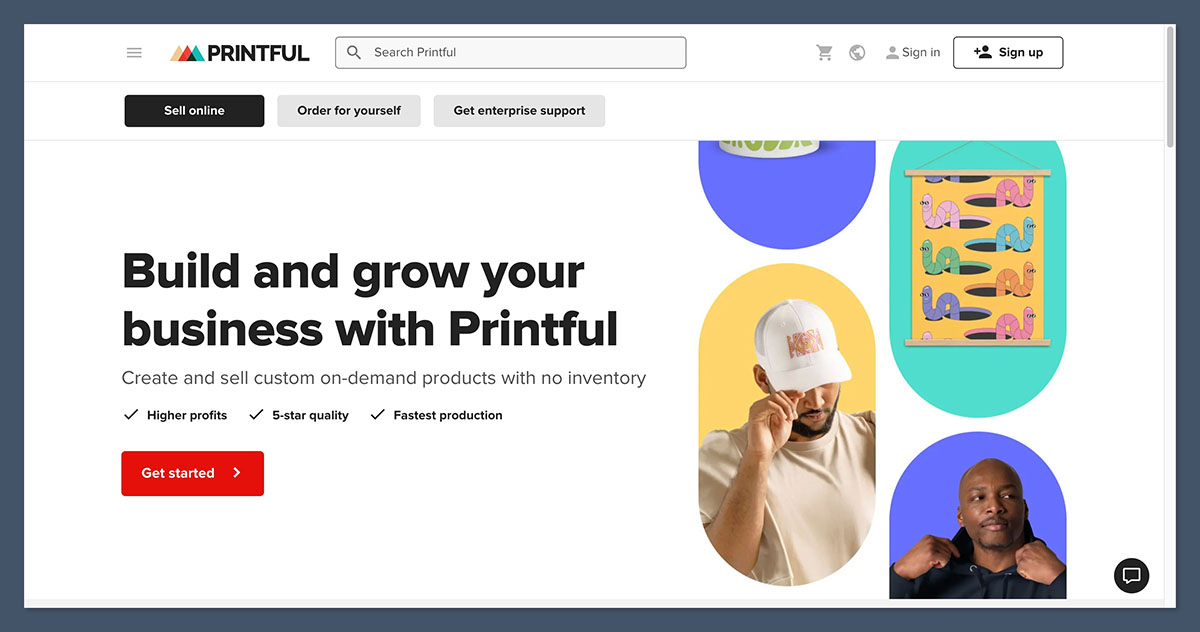
You sell products under your own name through a store you control — whether it’s Shopify, Etsy, or WooCommerce. You choose your prices. You deal with customers. You get the data.
Society6, on the other hand, is closer to licensing. You’re submitting your artwork to a marketplace. You don’t own the traffic.
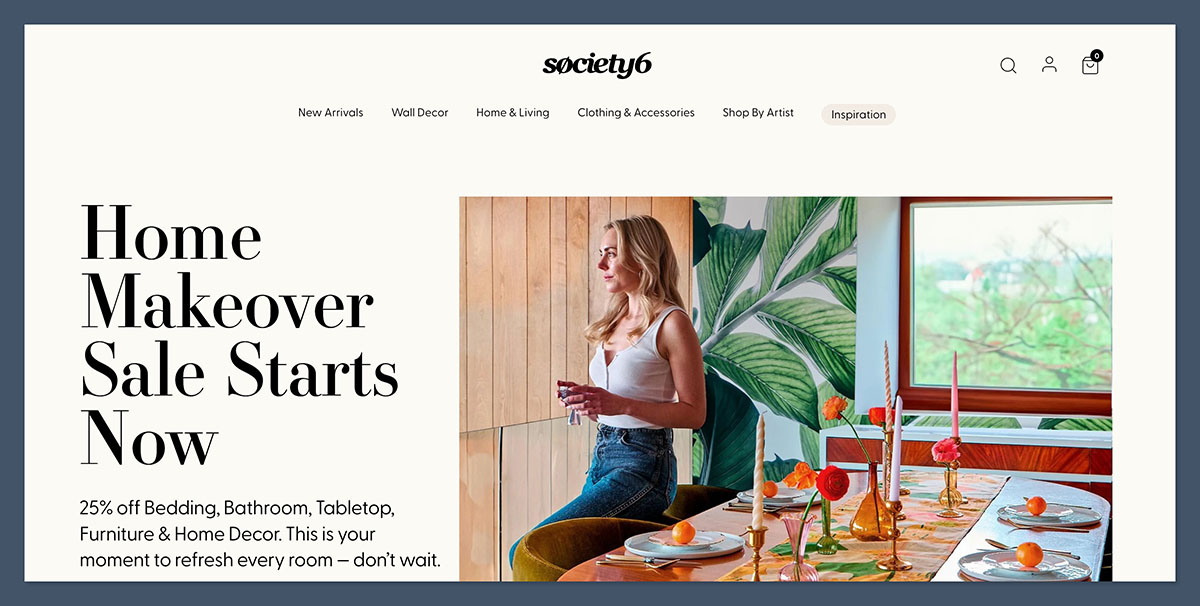
You don’t manage customer support. They handle fulfilment, shipping, everything. You’re essentially letting Society6 monetise your art for you.
If you’re okay with that tradeoff — less work, less control, lower upside — Society6 does its job.
But if you want to scale, grow, and retain ownership of your brand and customer base, you’ll eventually want Printful.
Product Offering and Customisation
Printful offers over 330+ products and is constantly expanding.
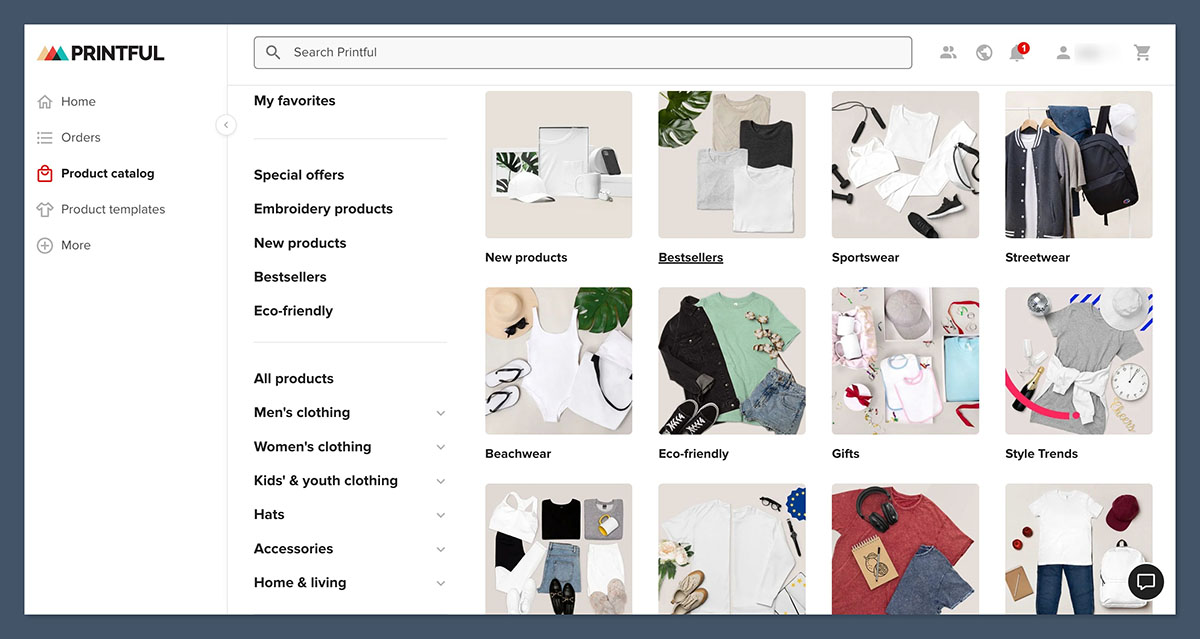
Some examples:
- Apparel: t-shirts, hoodies, leggings, jackets
- Accessories: tote bags, hats, socks, jewellery
- Wall art: posters, canvases, metal prints
- Home & lifestyle: mugs, pillows, blankets, backpacks
- Speciality items: swimwear, pet products, phone cases
- Embroidery and engraved items
What sets Printful apart is customisation. You can add your own:
- Inside shirt labels
- Branded packing slips
- Custom packaging
- Pack-in inserts (like thank you notes or discount codes)
That’s branding. That’s retention. That’s repeat business.
Society6, on the other hand, has a niche range — geared heavily toward visual artists and home decor lovers.
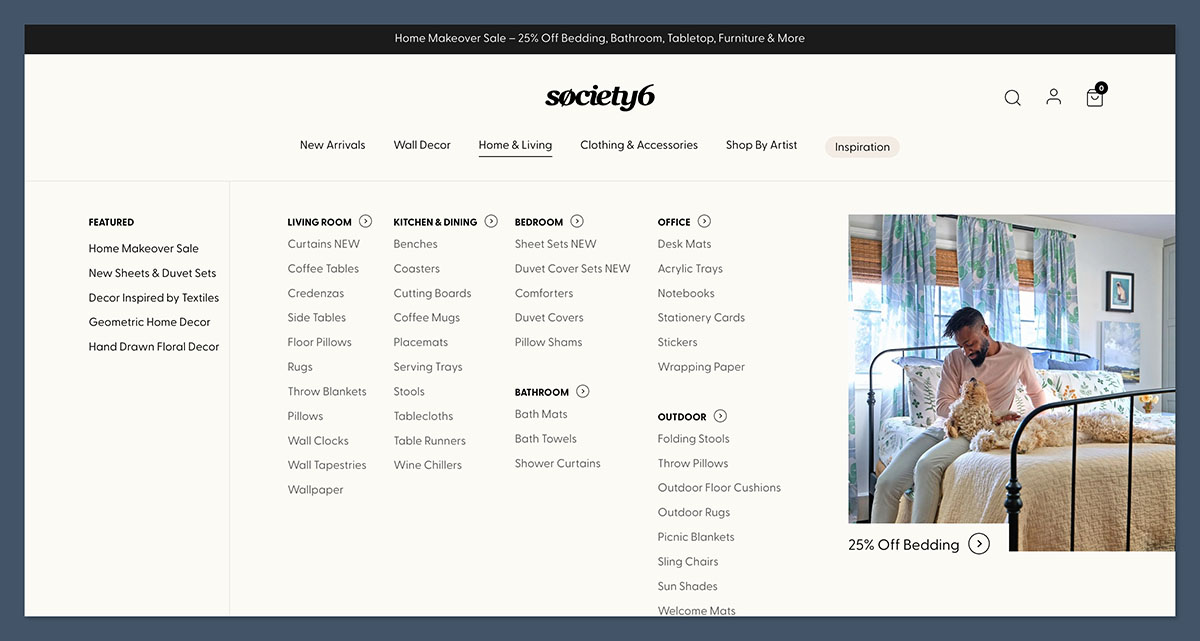
Products include:
- Art prints (framed/unframed)
- Wall murals and tapestries
- Furniture
- Bedding and bath
- Tech accessories (phone cases, laptop sleeves)
- Stationery
- Lifestyle products like yoga mats and water bottles
You upload your art once, and they generate mockups on dozens of SKUs. The convenience is impressive, but there’s zero control over branding.
Print Quality
Both platforms use decent printing technology — but I’ve noticed some key differences over time.
Printful has multiple fulfilment centres globally (US, UK, EU, Canada, Australia, Japan), and their production is handled either in-house or by highly vetted partners.
Print consistency is high. Colours are reliable. Returns are easy to manage. Quality is generally predictable.
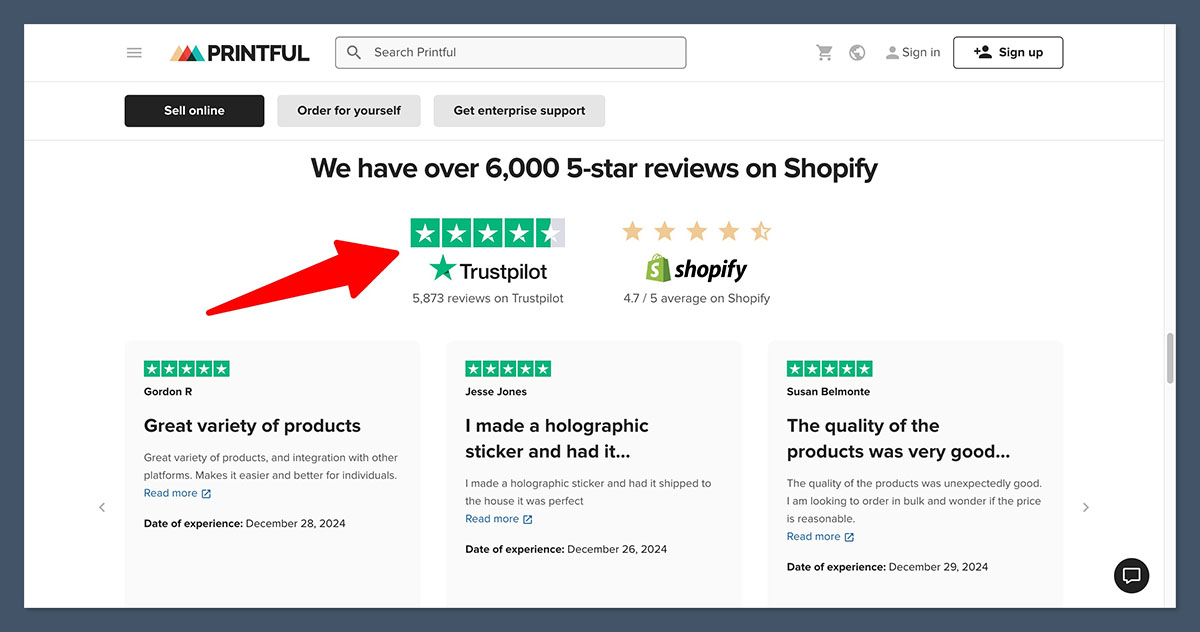
I always order samples before running ads or pushing campaigns. Out of dozens of samples I’ve ordered from Printful, only one or two were slightly off.
Society6 also produces solid quality — especially on art prints and framed goods — but you don’t have the same level of control.
You can’t easily request reprints, inspect individual orders, or get involved if there’s a customer complaint.
That’s the tradeoff: hands-off vs hands-on.
Pricing and Profit Margins
This one matters more than most creators realise.
With Printful, you set the price. That means you can control your profit margin.
Example:
- A t-shirt might cost £10 to produce
- You sell it for £25
- You pocket the £15 gross profit (before platform fees and marketing costs)
You can build bundles, upsell offers, discounts, seasonal sales — the full ecommerce toolkit.
Society6 controls most of the pricing.
You can only set markup for art prints and a handful of other items. For everything else, your earnings are fixed — often between $2 to $5 per sale, no matter how high the retail price is.
For example:
- A pillow might retail at $45
- Your cut? Around $4
- Society6 takes the rest to cover fulfilment, marketing, and overhead
You’re trading upside for simplicity.
Fulfilment, Shipping, and Speed
Printful is faster — especially in major regions like North America and Europe.
They print and ship from the nearest location to your customer. Orders are processed within 2–5 business days on average, and shipping speeds are reasonable.
- USA orders: usually 3–5 business days
- UK and EU: around 4–7 days
- Global: varies, but mostly under two weeks
Society6 has slower, less predictable fulfilment.
Some products (especially custom items like furniture or rugs) can take up to 3 weeks or more to be delivered. There’s also less transparency around tracking, which makes it harder to give customers accurate expectations.
If you’re running a business and need consistency, Printful has the edge.
Traffic & Customer Acquisition
This is where Society6 has an advantage — they bring the audience.
Their platform sees millions of monthly visitors, and they’re specifically looking for art-based products.
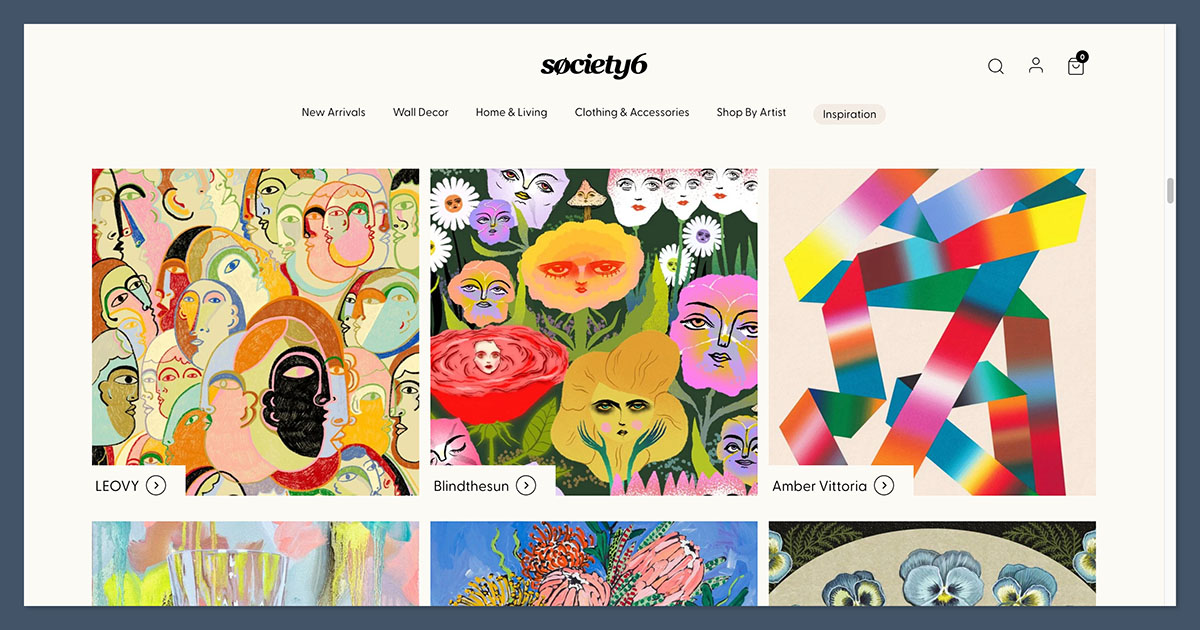
If your work gets featured or starts ranking internally, you can generate sales passively.
But the downside? You don’t own the audience. You can’t retarget them. You can’t collect emails. You don’t know who bought what or why.
Printful relies on your traffic.
No one’s going to magically find your store. You’ve got to:
- Learn SEO
- Run paid ads
- Build social proof
- Use influencers or UGC
- Optimise your website
But you get full ownership — and long-term that’s where the money is.
Brand Building Potential
Let me say this as clearly as I can:
If you’re serious about building a real business, you can’t do it on Society6.
What Society6 offers is reach — but not ownership. You don’t get:
- Custom branding – every order is shipped in Society6’s packaging, not yours
- Email marketing – you never see the customer’s email, so you can’t follow up, upsell, or launch to your existing base
- Retargeting ads – there’s no pixel, no customer data, no ability to bring people back
- Review management – customers review Society6, not you
- Post-purchase flows – you can’t send thank-you messages, ask for referrals, or give discounts
- Customer experience control – everything from packaging to delivery to returns is out of your hands
You’re essentially a guest in their marketplace. They own the customer. They own the platform. If their algorithm changes tomorrow, your income disappears.
That’s rented land — and I’ve seen it burn plenty of artists and small creators over the years.
Now compare that with Printful.
With Printful, you’re not just selling a product — you’re building an actual brand. You’ve got the tools to shape every part of how people see, feel, and interact with your business:
- Visual identity – logos, fonts, product photography, site design — all yours
- Packaging – include your logo, custom labels, thank-you cards, or even unboxing experiences
- Customer experience – write your own product descriptions, set tone of voice, run support
- Storytelling and messaging – connect your brand to a purpose, lifestyle, or niche
- Product expansion – add new SKUs quickly, test new niches, run limited drops
- Loyalty and retention – build an email list, launch a VIP program, or run subscriber-only discounts
This is how real ecommerce brands are built.
Yes, it takes longer. Yes, there’s a learning curve. But the upside is enormous — and more importantly, you own it.
That control is what gives you flexibility. You can pivot your niche. You can run promotions. You can build recurring revenue. None of that is possible if you’re locked inside someone else’s ecosystem.
So if your goal is long-term, scalable income — not just side money — Printful gives you the foundation.
Integrations & Automation
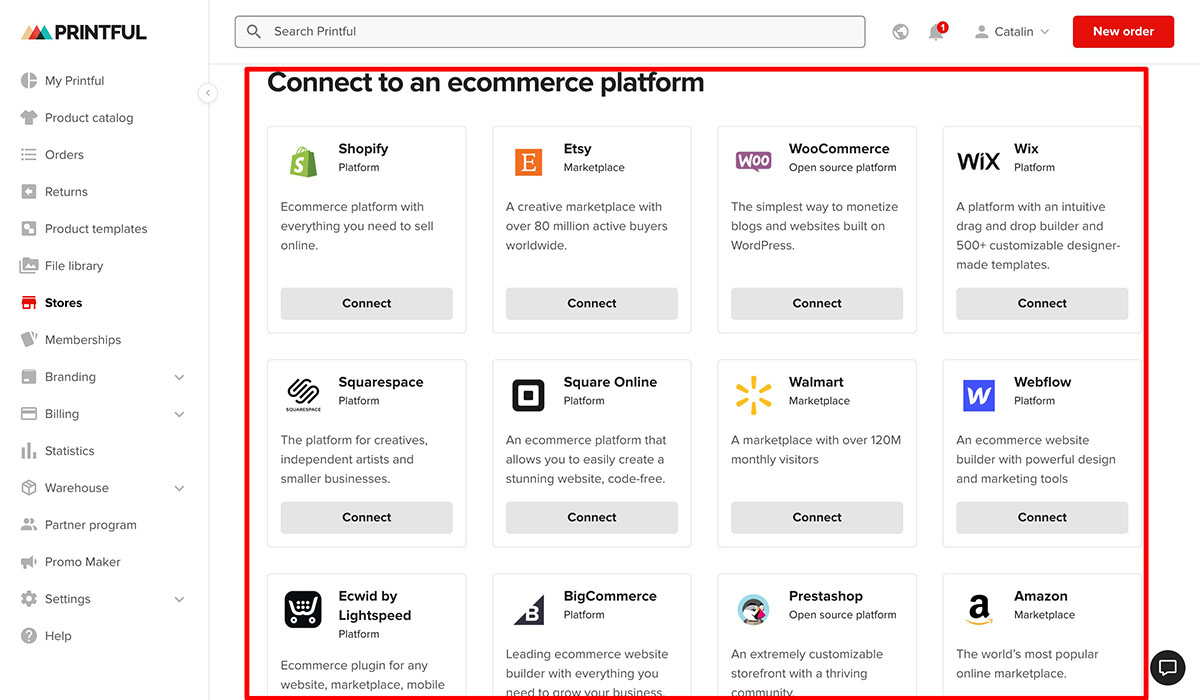
One of Printful’s biggest strengths is how well it plugs into other platforms. You don’t need to build some Frankenstein tech stack.
It already works out of the box with all the major ecommerce platforms and marketplaces:
- Shopify
- Etsy
- WooCommerce
- Squarespace
- Wix
- Amazon
- eBay
- TikTok Shop
- BigCommerce
- Webflow
- Ecwid
What this means in real terms:
- When a customer places an order, it goes straight to Printful automatically
- No manual fulfilment, no spreadsheets, no middle steps
- Inventory is synced — if a product goes out of stock, your store updates instantly
- Changes to product descriptions or pricing on Printful can auto-update across channels
- You save time, avoid mistakes, and scale faster
Plus, if you’re using Shopify or Etsy, you can customise workflows — like automated thank-you emails, upsell sequences, and even cart recovery. It all connects.
Now contrast that with Society6 — which has no integrations at all.
It’s a closed system. You can’t connect it to your site, automate anything, or retarget customers. You upload your art, set it live, and wait. If you want to build systems or scale efficiently, you’re going to hit a wall.
So from a backend perspective, if automation and multi-channel selling matter to you — Printful is far ahead.
Summary: Which One Should You Use?
Let’s simplify this.
| Feature | Printful | Society6 |
|---|---|---|
| Branding | Full control | None |
| Customisation | High | Low |
| Passive income | Semi-passive | Fully passive |
| Audience | You build it | Built-in |
| Product range | Extensive | Niche but artistic |
| Margins | Flexible | Fixed, low |
| Fulfilment speed | Fast | Slower |
| Integrations | Dozens | None |
| Print quality | Consistent | Can vary |
| Payout control | Instant (via store) | Delayed (monthly) |
Final Thoughts
Here’s how I usually explain it to new clients:
- If you’re an artist who just wants to upload your work and get occasional payouts with no stress — start with Society6.
- If you’re serious about building a brand, owning your customers, and scaling your income — go with Printful. It takes more effort, but the upside is 10x bigger.
Personally, I use Printful for every serious ecommerce project I run. I’ve built stores that do consistent daily sales, and the control it gives you is non-negotiable once you’ve experienced it.






